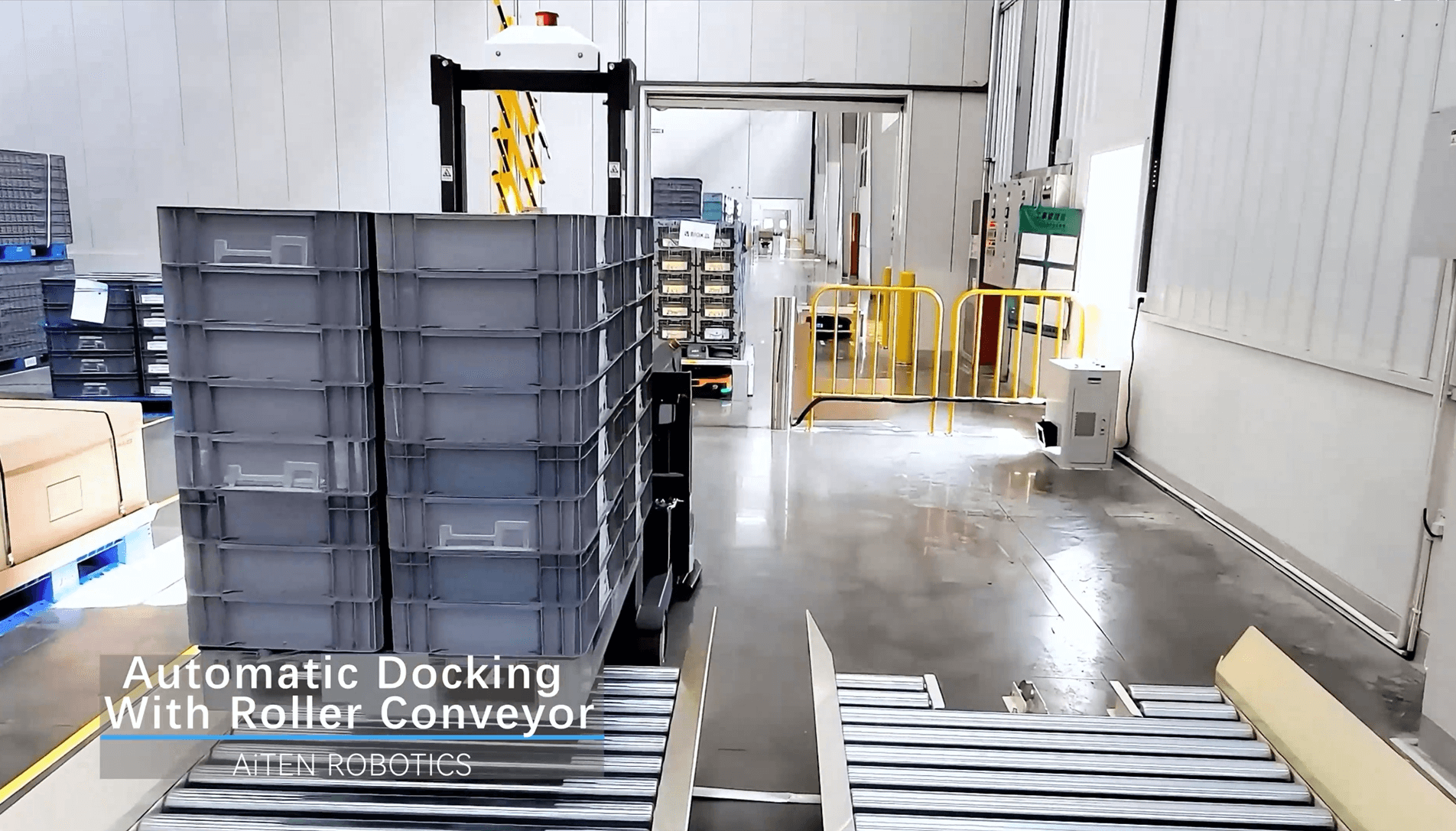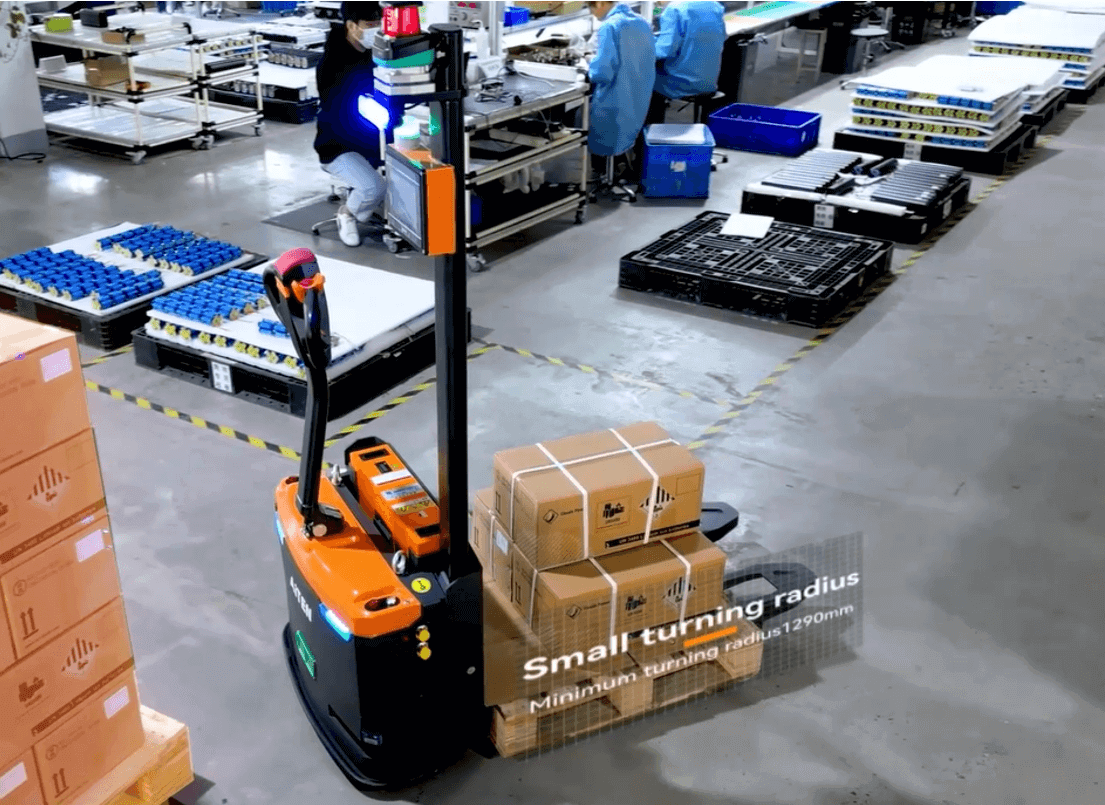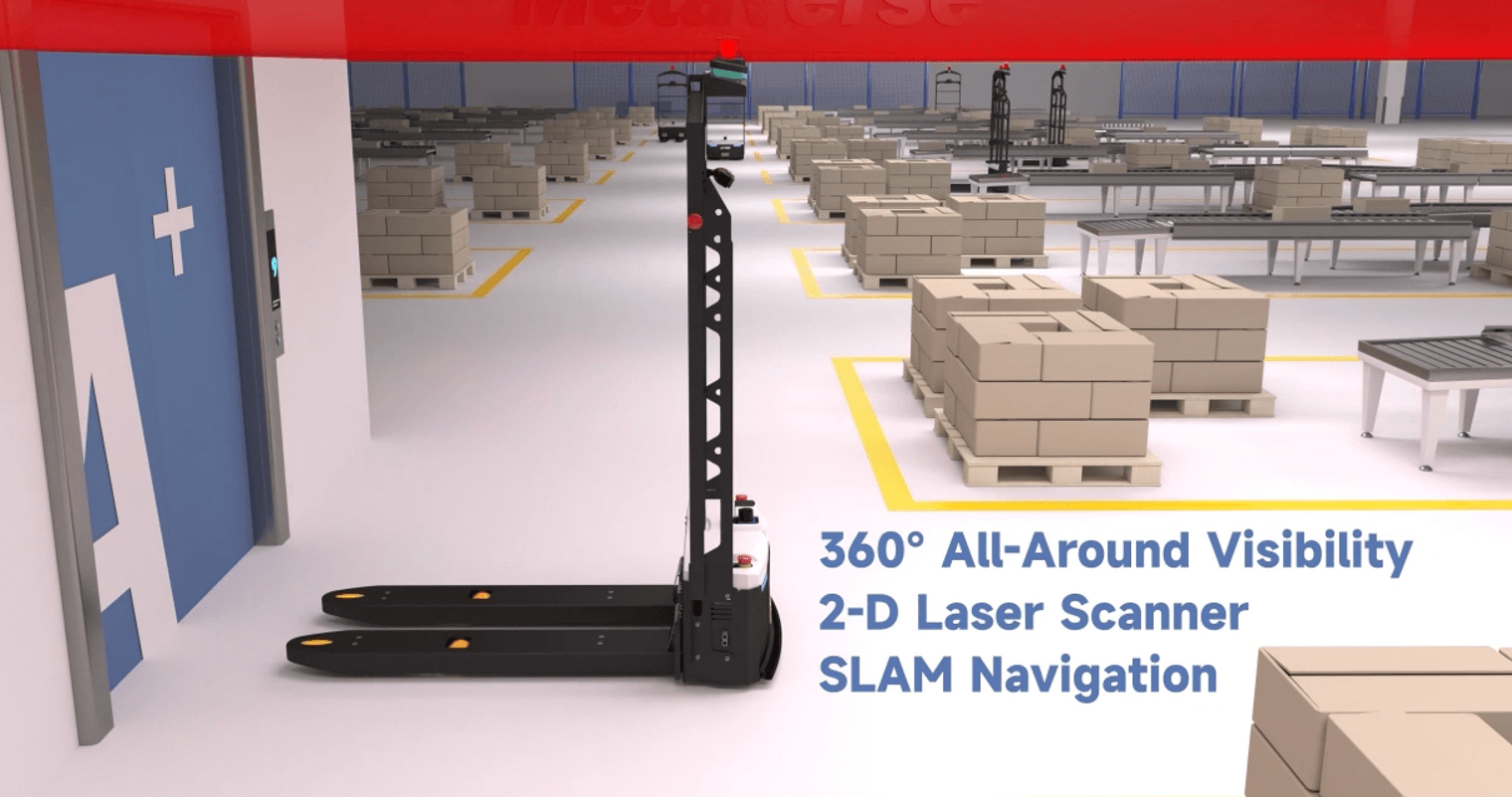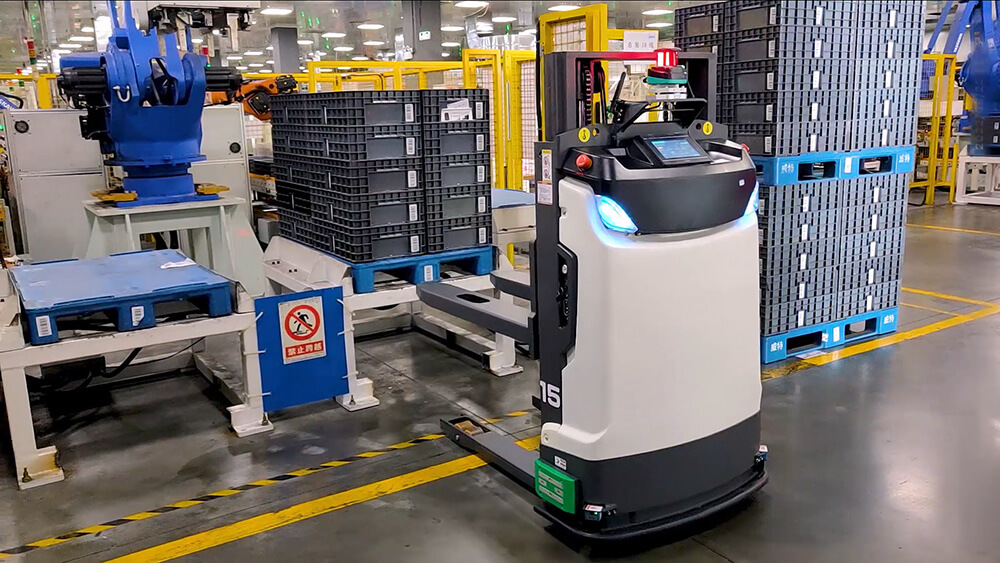¿Qué es un robot carretilla elevadora? Por qué las empresas eligen robots de carretillas elevadoras?

En un contexto en el que la industria manufacturera y logística mundial acelera su transición hacia la intelligentisation, los robots de carretillas elevadoras (también conocidos como carretillas elevadoras no tripuladas, carretillas elevadoras AGV o carretillas elevadoras autónomas) se están convirtiendo cada vez más en el centro de atención de las empresas.
Según MarketsandMarkets, se prevé que el mercado mundial de carretillas elevadoras autónomas alcance los miles de millones de dólares en 2030, con una tasa de crecimiento anual compuesto superior al 15%.
Los robots carretilla elevadora no sólo permiten la manipulación automatizada de materiales y mejoran la eficiencia logística, sino que también se integran profundamente con los sistemas de gestión de almacenes (SGA), proporcionando optimizaciones polifacéticas en eficiencia, seguridad y costes. Entonces, ¿qué son exactamente los robots carretilla?
¿Qué es un robot carretilla elevadora?
Un robot carretilla elevadora es un dispositivo inteligente que utiliza navegación autónoma y tecnología de detección para lograr una manipulación de materiales sin personal. A diferencia de las carretillas manuales tradicionales, las carretillas AGV pueden realizar tareas como la manipulación de materiales, el apilamiento y el acoplamiento de estanterías sin intervención humana. Utiliza tecnologías básicas, como lidar, navegación visual y algoritmos SLAM, para permitir la manipulación de materiales, el apilamiento y las operaciones de almacén sin personal las 24 horas del día, los 7 días de la semana.
La diferencia más significativa con respecto a las carretillas manuales es que no necesitan operario; el sistema realiza de forma autónoma todas las trayectorias de conducción, los movimientos de las horquillas y la identificación de la carga.
Tipos comunes:
1. Carretilla elevadora no tripulada contrapesada - Adecuada para el apilamiento en estanterías altas y el transporte de cargas pesadas.
2. Carretilla elevadora no tripulada Reach - Se utiliza para operaciones en pasillos estrechos y estanterías altas.
3. Transpaleta - Adecuada para la manipulación de materiales en líneas de montaje.

Tecnología central
1. Sistema de navegación: Láser 3D SLAM, SLAM visual y navegación híbrida por código QR, con una precisión de posicionamiento de ±10 mm.
2. Sistema de percepción: Láser de 360° + cámara de profundidad, detección en tiempo real de personal, estanterías y palés, evitación de obstáculos y desaceleración, garantizando la seguridad al operar en entornos con personas.

3. Control de movimiento: Servomotor + accionamiento diferencial, que permite la rotación sobre la marcha y el desplazamiento bidireccional en pasillos estrechos. La tecnología de servocontrol de alta precisión garantiza que las horquillas puedan engancharse con precisión a la parte inferior del palé.
4. Mecanismo de horquilla: Tres configuraciones principales -tipo de alcance, tipo contrapesado y tipo apilador- con alturas de elevación que van de 1 a 7 metros. Funciones como el ajuste automático del mástil y la detección de horquillas mejoran aún más la inteligencia operativa y la seguridad.
5. Plataforma de despacho inteligente: Se integra perfectamente con los sistemas WMS/MES para permitir la asignación de tareas y la optimización de rutas.
¿Qué es una carretilla elevadora autónoma? Revolucionando las operaciones de almacén
¿Por qué necesitan las empresas robots para carretillas elevadoras?
1. Mejora de la eficiencia: Los robots pueden trabajar de forma continua sin turnos, lo que acelera la rotación logística.
2. Hacer frente a la escasez de mano de obra: Paliar eficazmente la escasez de mano de obra a la que se enfrentan habitualmente las industrias logísticas y manufactureras.
3. Mejora de la seguridad: Elimina los riesgos de seguridad asociados al manejo manual de carretillas elevadoras, como colisiones, aplastamientos y caídas de la carga, creando un entorno de trabajo más seguro.
4. Alta escalabilidad: A medida que la empresa crece, el número de despliegues puede aumentarse rápidamente sin necesidad de grandes modificaciones de la infraestructura.
Casos prácticos de robots AiTEN:

¿Qué pueden hacer los robots de carretillas elevadoras?
Su misión principal es la automatización de la manipulación de materiales, con aplicaciones específicas que abarcan los principales procesos de producción y almacenamiento:
1. Recepción y almacenamiento: Transportar automáticamente las mercancías desde la zona de carga y descarga hasta los lugares de almacenamiento o zonas de seguridad designados.
2. Transporte intraalmacén: Transfiera automáticamente materiales y productos acabados entre diferentes ubicaciones de almacenamiento, estaciones de trabajo y líneas de producción.
3. Expedición de salida: Transporte de pedidos recogidos o palés completos de mercancías a la zona de expedición.
4. Suministro a la línea de producción: Suministrar con precisión y puntualidad a la línea de producción las materias primas o los productos semiacabados necesarios para la producción.
5. Almacenamiento y recuperación en estanterías altas: Algunos modelos de AGV con carretilla elevadora tienen capacidad de elevación automática, lo que sustituye a las operaciones manuales con carretilla elevadora en estanterías elevadas para almacenar y recuperar mercancías de las estanterías, mejorando significativamente la seguridad.

Conclusión
Con la profundización del desarrollo de la fabricación inteligente y la automatización de la logística, los robots de carretillas elevadoras se convertirán en una herramienta clave para que las empresas mejoren su competitividad.
Para las empresas que desean mejorar la eficacia de la producción, reducir los costes operativos y aumentar la seguridad, sin duda merece la pena invertir en soluciones de manipulación inteligentes. A medida que la tecnología siga madurando, los robots de carretillas elevadoras desempeñarán un papel cada vez más importante en más industrias.
Acerca de AiTEN Robotics
Como empresa especializada en soluciones logísticas inteligentes, AiTEN Robotics se ha centrado sistemáticamente en el escenario de la "fábrica inteligente", integrando profundamente la innovación tecnológica con las necesidades de la industria. Ha prestado servicios integrales a más de 200 clientes fabricantes de todo el mundo: Aprovechando una gama completa de carteras de productos de robots de manipulación de materiales para cubrir diversos escenarios de manipulación de materiales, hemos desarrollado un sistema de programación inteligente de nivel industrial para permitir una colaboración eficiente entre múltiples dispositivos. A través de un sistema integral de servicios de ciclo de vida que abarca desde la planificación preventa, la implantación y la implementación hasta la optimización de las operaciones, capacitamos a las empresas para lograr la transformación inteligente de la logística, impulsando continuamente la actualización digital y el desarrollo de alta calidad de la industria manufacturera.
Póngase en contacto con nosotros para estudiar soluciones de automatización para su fábrica.









_%E7%94%BB%E6%9D%BF%201.avif)

